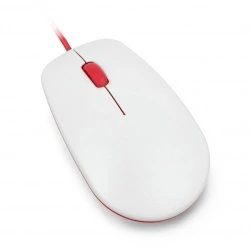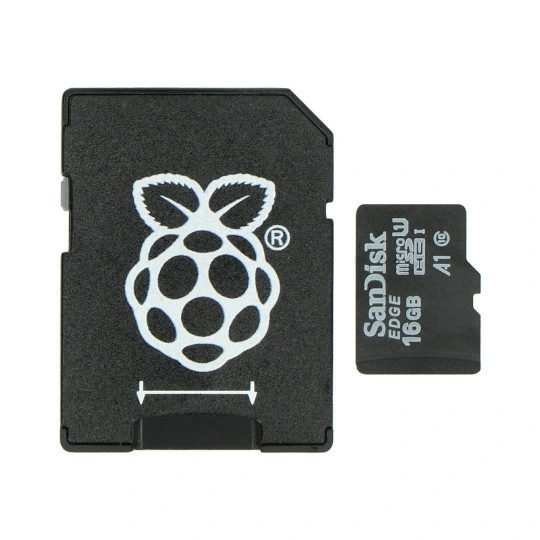Table of Contents:
A new shipment of must-have accessories for our computer. The naked Raspberry Pi is not only worth clad and outfitted, it should even be done. Why use only the most basic functionality when you have the best minicomputer in the world at hand? Accessories mean new features, and besides, upgrading is always fun.
Raspberry Pi communication – USB accessories and hubs (splitters)

Oh, there’s a lot of it! If we divide the accessories by the standard of their connection… it’s actually as if there’s no dividing criterion adopted. It’s about compatible computer accessories known from every house, because we use USB on daily basis. So you can easily connect any mouse, keyboard, Wi-Fi card, adapter, speaker and practically everything else to the USB ports of your Raspberry.
To be more specific about Raspberry connectors: the latest version, Raspberry Pi 4B, has two USB 3.0 and two USB 2.0 connectors in addition to two microHDMI connectors and a USB C power connector.
Our point is to make you remember that connecting additional accessories to your Raspberry Pi does not take place using highly complicated methods. Everyone is familiar with the USB standard. If we had to recommend something from the vast sea of accessories – and there are really a lot of them at Botland – it is definitely the official ones for a start:
- Official mouse for Raspberry Pi Model 4B/3B+/3B/2B – red-white
- Official mouse for Raspberry Pi Model 4B/3B+/3B/2B – black-gray
- Official keyboard for Raspberry Pi Model 4B/3B+/3B/2B – red-white
- Official keyboard for Raspberry Pi Model 4B/3B+/3B/2B – black-gray
A little less known, but very interesting option is an USB hub. Accessories are pleasing to the eye, for sure, but what if the adapter is not enough and we simply run out of sockets? You need a new connection center. Such a device is a USB splitter, or USB hub for Raspberry Pi, which allows you to connect a large number of devices. All you need for this is a single USB port.


Raspberry Pi memory storage
Our memories. Important documents. Sensitive backup data. Software files. We have to store it all somewhere, right? Just like on your personal computer or in your phone’s memory/card. More like on a card, definitely yes. Raspberry Pi works like any other device in this regard.
A definitely recommended SD memory card is justPi 32 GB.
The hardware is dedicated exclusively to the Raspberry Pi. They are tailored to act as the main storage medium. They have properly adjusted parameters such as Ultra High Speed (UHS-I) speed class, but naturally they will work well wherever high writing speed is not required. The card comes preloaded with software for our Raspberry Pi, so in addition to the storage space you get a quick and comfortable setup.


Raspberry Pi cameras
For what is a camera useful for? – well, that’s the stuff everyone knows. But we’re not talking about the camera in your smartphone or the probably already somewhat archaic family videocam archive at home. With a matched camera module Raspberry Pi you can create:
- a doorbell with camera and Alexa voice assistant,
- a streaming camera or webcam,
- high definition video recording,
- a tiny spy camera,
- a talking toaster with Raspberry Pi Zero and Google AIY Voice add-on,
- a data collector, such as one that monitors pedestrian movement in the visual range,
- a security camera in front of the door registering entrants,
- smart door lock with facial recognition,
- high definition video recording,
- a sneak-peeker for the operation of virtually any device we point our camera at,
- a photo trap for those who love watching wildlife,
- or you can use the camera module with drones or in specialized experiments.
Of course, these are just sample projects and ideas of what to do with a Raspberry Pi camera, but not some conceptual sketches possible only in theory. Someone has actually described them – take a peek at Seeedstudio.
You can go wild here, too. Why? Just like with other accessories – we have a choice of official ones and those created with Raspberry Pi in mind by other manufacturers based on the popularity of the original platform. Raspberry Pi Camera Modules are official products of the Raspberry Pi Foundation. The original 5-megapixel model was released in 2013 and the 8-megapixel Camera Module v2 in 2016 . Visible light and infrared versions are available for both versions. The 12-megapixel high-end camera was released with a high-profile launch at Botland in late April 2020.
Lenses and tapes stand for their own kind. Special tapes with adapters facilitate mounting and allow to mount the camera up to 300 mm from the unit itself. Mounting is instant thanks to specially prepared mounting holes. And there’s a bonus for the demanding ones – Arducam IMX298 camera has been equipped with a 16 Mpx sensor, which in everyday photography and video recording corresponds to a very nice quality. If it’s still not enough for you or you’re just looking for something different you can find all camera modules, lenses and tapes for Raspberry Pi, including official ones below.

How useful was this post?
Click on a star to rate it!
Average rating 0 / 5. Vote count: 0
No votes so far! Be the first to rate this post.





















